Fire, Flood and Snow
'Army extraordinaries. To Major Lister, to replace 5 horses of his Corps of Dragoons, which were burnt by a fire that happened in Ashburton 16th January 1782.'
Journals of the House of Commons, November 26th 1782 - March 24th 1784, reprinted 1803, p96
A fire in Ashburton in 1854 (see further down the page) was one of the most 'calamitous and destructive since the great fire, which destroyed a large portion of East-Street on July 1st, 1784'
Western Times 6 May 1854, p7 col4
The lease of a property in East Street in 1787 (see the Virtual Museum, 1780s submenu) describes the premises as 'ruinous and in great decay..' A condition of the lease is that William Fabyan must 'rebuild and repair' the premises, 'lately burnt down'.
* ******** *
On the opposite side of the street (although not necessarily directly opposite) the deeds of what is now 72 East Street describe the property in 1809 as a 'new-built messuage or dwelling house'
(thanks to Rachel and Rob Manners for this, and to Alan Lambourne for providing a transcription)
* ******** *
These East Street premises might be what Charles Worthy is referring to in the following, written in 1875:
'The absence of ancient buildings in the town of Ashburton is due to the circumstance of a large portion of the town having been destroyed by fire about ninety years since, when the houses were rebuilt the streets were widened, and many which had survived the fury of the flames fell victims to the desire for modern improvements......'
Ashburton and its neighbourhood, Charles Worthy, L B Varder printer and publisher, Ashburton 1875, p48
*******
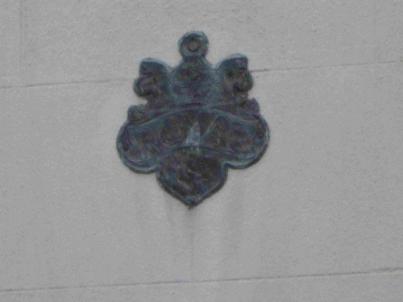
Until at least the 1600s, people were reliant upon the charity of others if they suffered the misfortune of losing their homes and contents in a fire - typically the church would make a collection.
The plaque, or mark, shown above appears to be that of the Royal Insurance Company (1845 - 1997) - the word Royal in a broad banner can just be seen when the photo is enlarged.
Records of the Sun Fire Office, held in the London Metropolitan Archives (see http://www.nationalarchives.gov.uk/
MS 11936/370/572647 9 August 1790
Insured: Joanna Cook, Ashburton, Devon, widow
Other property or occupiers: West Street Ashburton (Lamb Butler)
MS 11936/370/570477 11 June 1790
Insured: John Dolbear, Plymouth, Devon, gent
Other property or occupiers: Church Lane, Ashburton, Devon (Wm. Halse); Heavy Head Lane, Ashburton, Devon (Ann Weeks)
* ******* *
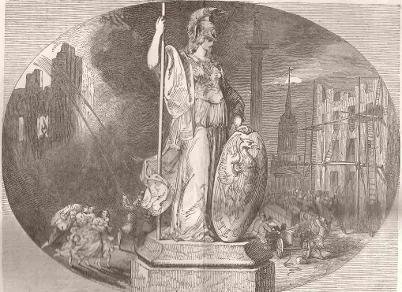
Above and right: A 'Policy of Assurance', No. 995797, from the Phoenix Assurance Company in 1850.
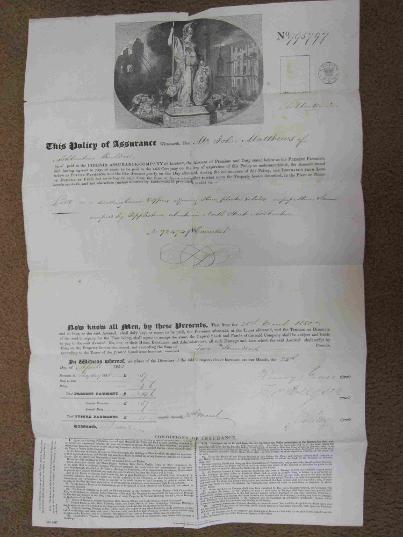
From my own collection
Another policy is in the 1870s section of the Virtual Museum
In 1843 a fire broke out in Mr Headon's candle manufactory, behind Crispin's Inn and adjoining the Arch. Stables and other buildings belonging to the inn were completely destroyed.
Western Courier, West of England Conservative, Plymouth and Devonport Advertiser, 25 October 1843 p2 col7
1848 Mr Perrott, saddler, suffered a fire in his shop in North Street in July. The contents were destroyed, as was part of the contents of the newsagents' shop to the right, occupied by Mr Mann. Mr Mann had been the first to raise the alarm, after seeing the flames reflected in the windows of buildings across the street. The house of John Roaden, relieving officer, adjoined Mr Perrott's on the left hand side.
Western Times 15 July 1848 p5 col4
Later the same year a fire,
believed to have started from a spark from a candle, destroyed much of R
Caunter's Belford Mill. Everything in the mill, including all the
machinery was lost, but the 'immense' water wheel and adjoining living
accommodation was saved. The mill, four stories high, was built,
according to the Exeter and Plymouth Gazette, in 1825.
Exeter and Plymouth Gazette 9 September 1848 p8 col2
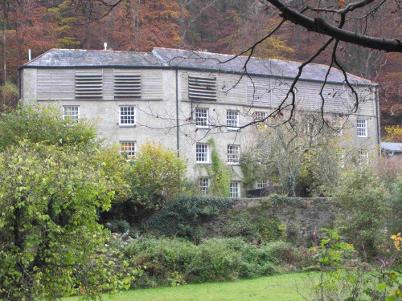
Above: Belford Mill
My own photograph 2013
In 1854 The Western Times reported the most 'alarming fire' the town had seen since the destruction of much of East Street on July 1st 1784
It started with a chimney fire in a thatched property in Back Lane (now Stapledon Lane), and messengers were sent to ring the fire bell at the Market. 'The rope of the bell was broken and it could not be rung'.
One of the two parish engines arrived, but could get little water from a nearby pump - the workers were hindered by not being able to get fire ladders or fire crooks.
The second engine arrived and had better success with getting water - meanwhile the elderly occupants of the house had escaped, and their furniture removed. Later more engines were sent for from Newton Abbot (Robert Rendell and men) and Buckfastleigh (C Furneaux and men).
The fire then spread next door to a property belonging to Mr Robert Bowden, and then to a barn and dwelling of W F Down, tea dealer; then to the property of Mr Norrish, dairyman. Cider, fish and wood was destroyed. Soon an old thatched slaughter-house on the opposite side of the lane was ablaze.
The report stated that 'the old chapel and adjoining houses were saved'.
Water was now being pumped from the River Yeo (now called the Ashburn), and water was also released from the Roborough reservoir, to run down East St. The locks had to be broken off the reservoir because the keys could not be found - afterwards a recommendation was made that people should know where the keys to the reservoir and the parish engines were kept.
A new fire now broke out in some thatched buildings behind Smerdon's Duke's Head Inn - the building was destroyed, and adjoining ones damaged.'All kinds of furniture were lodged in the streets
The paper praised 'all classes' for their efforts in controlling the fire - ie gentry, tradesmen and 'the working men', together with the representatives of the various insurance offices: Sun, Phoenix, West of England, Farmers' etc.
In particular J B Paige, R Tucker, R Caunter, R E Abraham, W A Cockey, W Barrows, Thos Lyle, J Tozer, J Hele, J Caunter jnr., and Rev W Marsh, jnr., were named, and praise was given 'to the young gentlemen of Ashburton Grammar School' some of whom stood in two feet of water with the working men' for over two hours.
The fire focused the town's attention on preventing
future calamities. The state of the bell rope obviously had to be
addressed and it was suggested that public gas lamps should be lit, at a
minimum of at least one per street on the darkest nights: at the time
no lamps were lit between Lady Day and Michaelmas. The parish engines,
which dated back to 1750 and 1786, had not been powerful enough, so
it was also suggested that the Fire Insurance offices should contribute
to a more powerful fire engine, with fire ladders and crooks - the same
plea that Charles Worthy was making twenty years later. There should
also be appointed, it was stated, 'an efficient brigade of active
persons, resident in the town'.
Western Times 6 May 1854 p7 cols 4/5
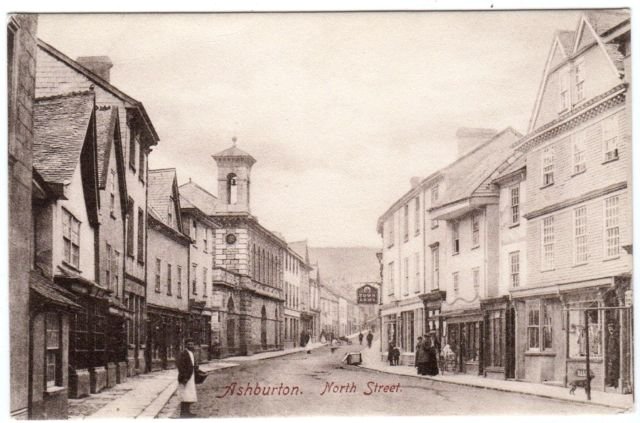
Left: North
Street, showing the bell tower at the Market Hall - this was the bell
that failed to ring during the fire in 1854
From my own collection.
*******
'...we would remark that as objects of antiquity the Parish engines deserve special notion, we are afraid to hazard a conjecture as to their date, they may be aboriginal, there is a tradition that Fairfax found one of them ready for any emergency when he marched into Ashburton, on the 10th January 1646.........we must not lose sight of the fact that they are actually scarcely larger and indisputably of less power, than modern garden engines, there are no appliances for attaching horses to them, and although without doubt should occasion demand it, the men who drag them from their repose into the open streets on every quarter day, would do their very utmost (should occasion demand it) for the preservation of life and property, still we would be glad to know that more efficient means were provided against the heavy calamity of fire'
Ashburton and its neighbourhood, Charles Worthy, L B Varder printer and publisher, Ashburton 1875, p48
* ******* *
1889
Messrs Shand, Mason and Co.* of London, supplied a new fire escape to
the town. Captain Tucker and the fire brigade demonstrated it to a large
number of people at the Bull Ring, firstly by putting it up on to the
building of the Rose and Crown, and 'rescuing' Fireman Foot.
Similar demonstrations were made at the premises of Mr W B Ward, Mr Distin and the Commercial Hotel.
Western Times 22 November 1889 p7 col2
* For more on Shand, Mason and Co see http://www.gracesguide.co.uk/Shand,_Mason_and_Co
The event would prove to be a motivating force for the volunteers, as well as giving them the opportunity to see a remarkable young man, the heir apparent to the throne of England.
Totnes Weekly Times, 18 July 1891, p7 col6
3 cottages at the higher end of North Street, on the banks of the river Yeo [now Ashburn] were destroyed in 1892. A spark from a nearby chimney ignited the thatch, and the houses were soon on fire: all the occupants* could do was to try and rescue their possessions. Captain Tucker and the fire brigade arrived quickly and prevented the fire spreading to other properties, and many people rendered assistance, 'conspicuous among whom were the women'.
Western Times 24 May 1892, p7 col4*'labouring men' Townsend, Pengilley and Mugridge.
In 1895 The Volunteer Fire Brigade were called out to St Lawrence Lane, but the fire was out on arrival. A porter from the Great Western Railway had left his pipe in his coat pocket, which had then set both the coat, and the door on which it hung, alight.
Exeter and Plymouth Gazette 6 December 1895 p11 col3
*******
Prof John Satterley, Ashburton in Late Victorian Days, Transactions of the Devonshire Association, vol 84, Torquay 1952, p24
* ******* *
Devon and Exeter Gazette 24 April 1900 p5 col3
1900 £60 worth of damage was done to Miss L and C C Soper's millinery business after a fire. The cause of the fire was not known.
Western Times 27 October 1900 p2 col5
In 1902 the Volunteer Fire Brigade was based at Station Road. George C Foot was Captain, plus 7 men.
Kelly's Directory of Devon and Cornwall 1902 p31
This may have been the same George C Foot who was living in St. Lawrence Lane (an alternative name for Station Road) in the 1901 census. Aged 37, he was an auctioneer and land agent.
1901 Census RG13, Piece 2053, Folio 5, p2
* ******* *
1908 saw a devastating fire in St Lawrence Lane in which John R Eddy, aged 80*, died. Richard Soper, captain of the Fire Brigade, with others attempted to rescue him, but were beaten back by the flames.
The blaze threatened the adjoining buildings of the Post Office and Holly Cottage, but both were saved.
A good supply of water was taken from the leat to Osmond's Mill.
Western Times 10 August 1908 p4 col7
* Registered at death as John Robert Eddy, aged 79
http://www.freebmd.org.uk/cgi/search.pl
* ******* *
1909 Captain R Soper, Ashburton Volunteer Fire Brigade, was one of the officials at the second annual prize competition of the Buckfastleigh Brigade.
Sub-Captain J Reddaway was one of the timekeepers.
Western Morning News 30 August 1909, p7 col1
Captain Reddaway was in charge of the brigade when there was a fire at Mr A Cove's property, Sunnyfield. Greenhouses and sheds were destroyed, together with tools and 'rare and valuable plants and vines'.
Western Times 10 October 1912 p2 col2
* ******* *
Western Morning News 3 August 1925 p3 col3
* ******* *
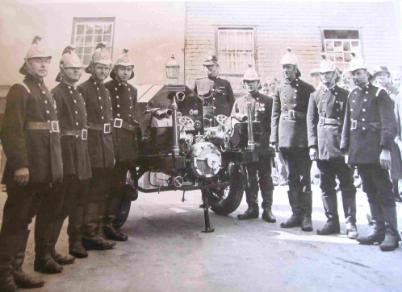
From my own collection
James French died in 1943. The bearers, members of the Fire Brigade, were: J Bonstow, W Tall, A Nicholls, F Baker, G Boorman, G German, G Endacott, G Mugridge.
Western Times 5 March 1943 p4 col4
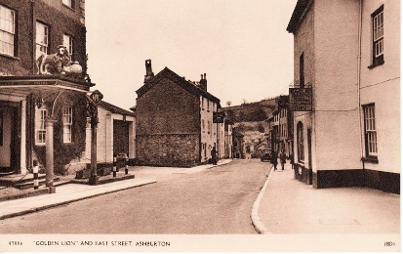
Left: The fire station, next building past the Golden Lion on the left.
From my own collection
'My father, Oliver Victor Brooks - known as Vic - was a member of the Ashburton Fire Brigade. The Brigade moved to East Street after the war, and was used in the film Guilt is My Shadow in 1949. He became Station Officer - contemporaries in 1954 were: Fred Baker, John Baker, Dougie Williams, Bill Sargeant, George Endacott, Fred Egbeare, George Mugridge, Jim Morrish and John Brixey.
In 1958 Vic decided to leave Ashburton and return to his birth town of Windsor, where he also joined the Fire Brigade.'
Many thanks to Carol Scott nee Brooks for the above information.
Flood
Flooding was a regular occurence in Ashburton until the flood prevention scheme in the 1970s alleviated the situation.
In 1881 there was extensive flooding, the worst, said the Western Times, since 1852. There was a flood from the Globe Hotel downwards, and West Street was impassable from Mr J Down's to the Wesleyan Chapel.
The wool-sorters at Messrs Berry's, 'who should have breakfasted at 8.15' could not do so until ten o'clock.
Western Times 26 October 1881 p4 col3
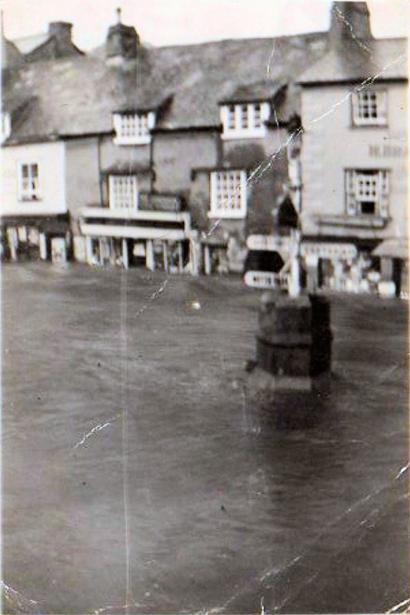
In the early 1930s the Urban District Council spent much of its time discussing the problem.
In the winter of 1932 the centre of the town was flooded over the weekend of the 9th and 10th of January: a grating in the mill stream and a blockage causing excess water to enter the River Yeo (now the Ashburn) were blamed.
Western Morning News 14 January 1932 p2 col7
In August 1938 the Western Morning News devoted most of a page to a storm that hit the whole county, with the heading 'Westcountry arises from sea of ruin'. Shops in Ashburton were flooded out, 'with provisions floating in the streets'.
Western Morning News 6 August 1938 p7 col6
James Arscott and Eileen Martin told the following story about their relative, Russell Martin, born in 1921. The precise year in the 1930's is uncertain, although it seems likely that it was in 1938, the year of the 'sea of ruin'.
'Russell Martin, swam around the Bullring ........He and his best friend swam under the water, they collected packets of butter/ lard/cream etc. and smeared the contents all over the walls and doors of the shops under water. When the flood receded and everything dried out, the smell was horrendous. Russell and his friend were caught, taken somewhere public, bent over chairs and the Headmaster gave them both '6 of the best'. They were just 2 high spirited boys who got caught when a prank went wrong'.
Many thanks to Frances Berry and Christine Lunt for this recollection.
Right: Russell Martin
Circa 1936/38 was when he was in Navy Boy Service and about this time swam up North Street.
Many thanks to Roy Martin for this photograph and information
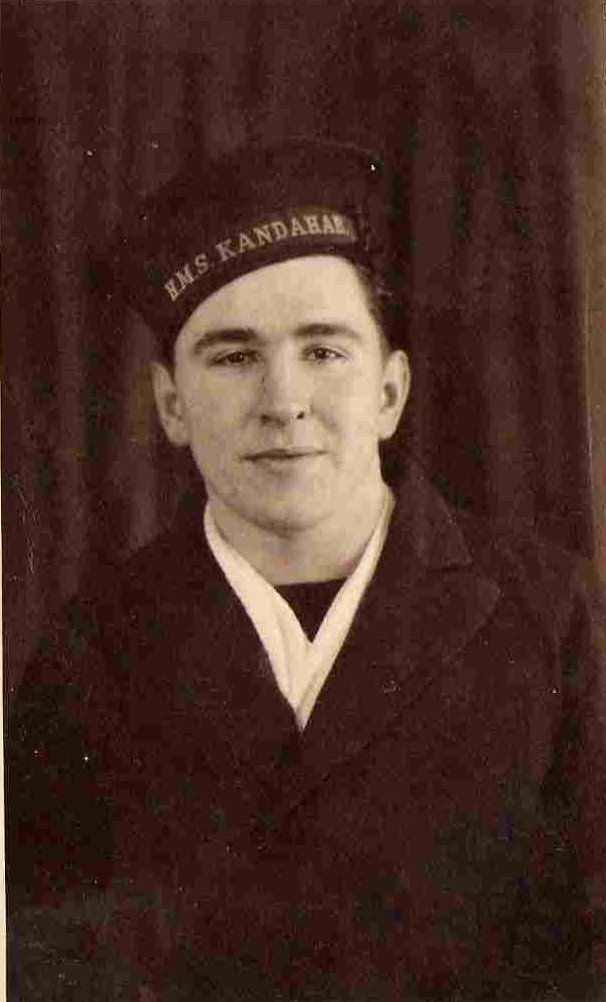
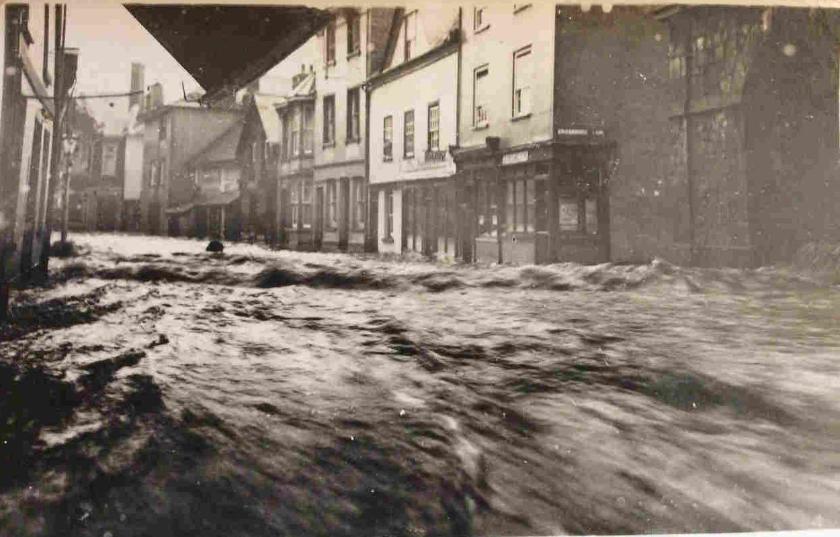
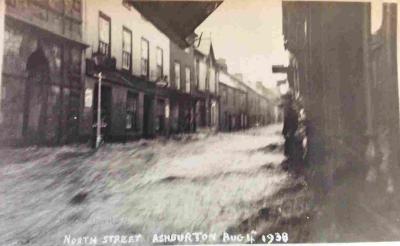
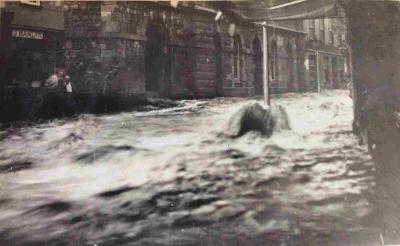
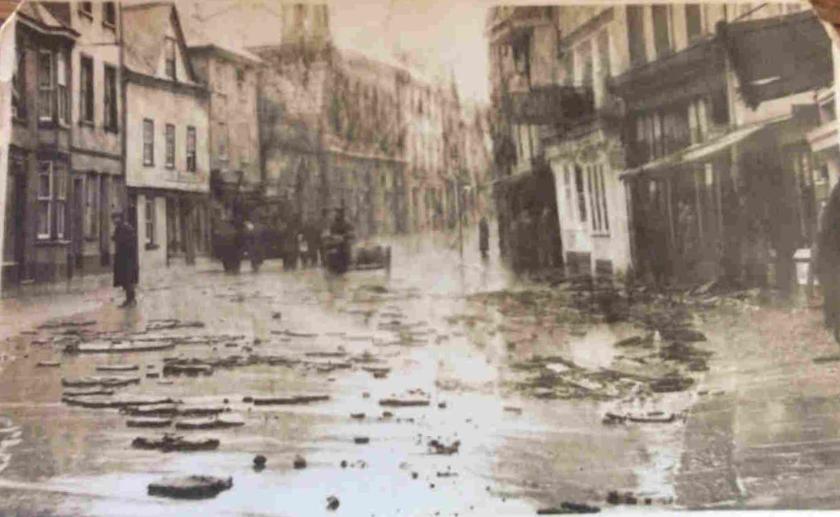
Many thanks to George Stone for this photograph
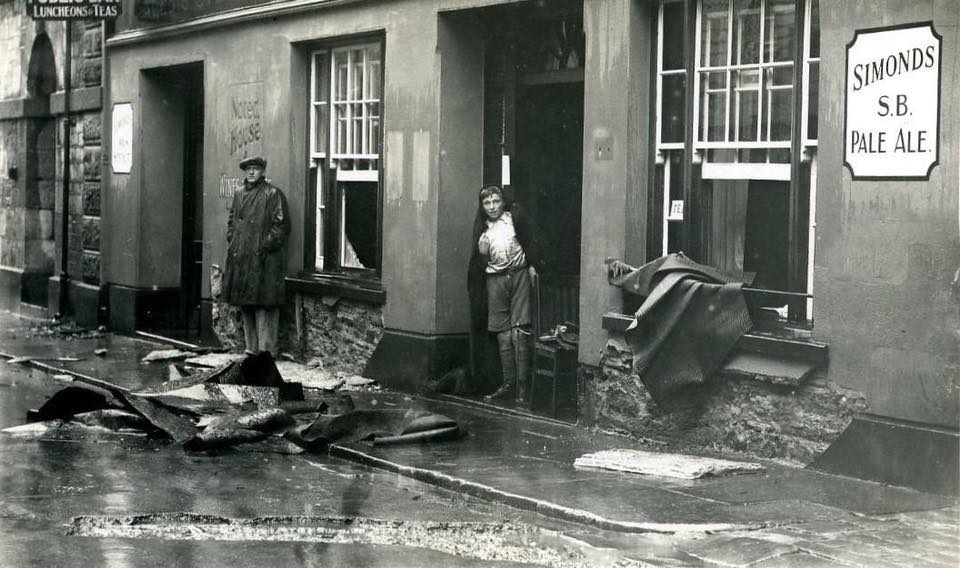
*******
Snow
The New Monthly Magazine and Literary Journa, London, 1825, p62ff
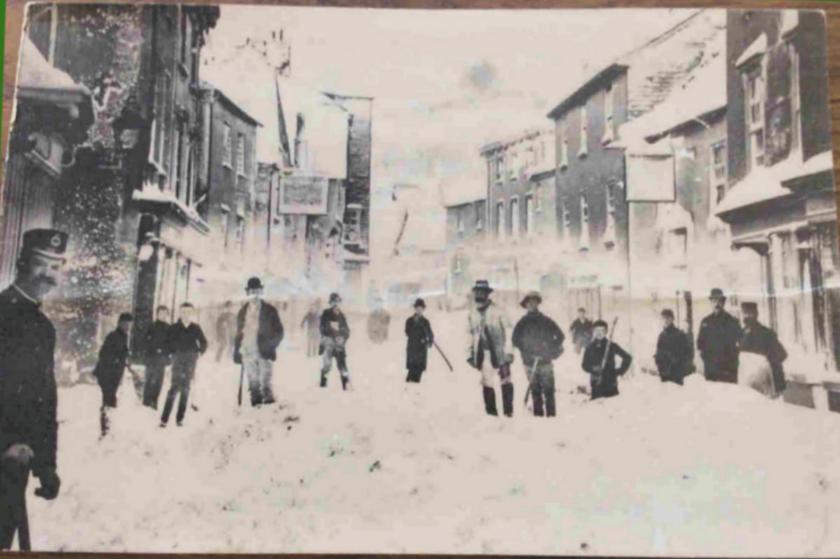
Many thanks to Tereena Ravenscroft for this photograph
'The Blizzard in the West' is, in its own words, 'A Record and Story of the Disastrous Storm which Raged throughout Devon and Cornwall on the Night of March 9th, 1891.' A cold but calm day rapidly turned into a tempest, the wind, which reached Force 10, forcing the temperature down even further. Falls in barometers had been the only indication of changing conditions, leaving people unprepared, and flocks and herds unprotected.
Snow had reached Plymouth by noon on Monday the 9th, but melted at first. However, as the wind began to rise the snow started to lay. Slates began blowing off roofs, chimneys collapsed and advertisement hoarding were blown down. Traffic stopped in the streets, and trees were uprooted; iron seats were blown from their fastenings on Plymouth Hoe.
Ashburton experienced huge drifts - one at Holne Turn was a quarter of a mile long and between 8 and 20 feet high - most roads were blocked. Bakers were unable to get their supplies out to their country customers.
By the end of the week business was more or less back to normal, but there had been a serious loss of stock. The apple orchards fared badly, with some younger trees losing every branch.
The Blizzard in the West, no author named, London and Devonport, undated, p83.
Available to read for free at https://archive.org
Photographs R Bligh
Western Morning News 20 February 1892, p5 col5
Villages were cut off by snow at the beginning of 1939 - mail vans from Newton Abbot could not reach a large number of places. There were four foot drifts between Ashburton and Tavistock.
Express and Echo 26 January 1939 p7 col2
Express and Echo 26 January 1939 p7 col2
Western Morning News 31 January 1947 p2 col4
The cold weather continued until March - on the 4th and 5th of that month heavy snow fell over most of England and Wales
http://www.metoffice.gov.uk/learning/learn-about-the-weather/weather-phenomena/case-studies/severe-winters - Accessed 01-10-2016
The winter of 1962/1963 was the coldest for 200 years. A belt of snow that began over Scotland at Christmas reached southern England on Boxing day, and there was a blizzard over the southwest on the 29th and 30th of December.
ibid
From Robin Bligh: 'I was an apprentice with Webber and Christophers during that winter, working on the vicarage in West Street. It was empty at the time* and bitterly cold. But there were lighter moments - I jumped out of a first floor window and landed in a snow drift. It was softer than I thought and I fell quite a distance through it. I think it was Stuart Brooking who grumbled at me, 'Can't you do anything but f*** about?'
R Bligh
* The Reverend John Trevor Charnley arrived in March 1963 - local memories, plus A Guide and Short History, St Andrew's Church, 5th edition
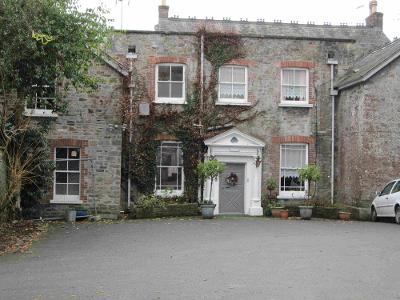
My own photograph 2016